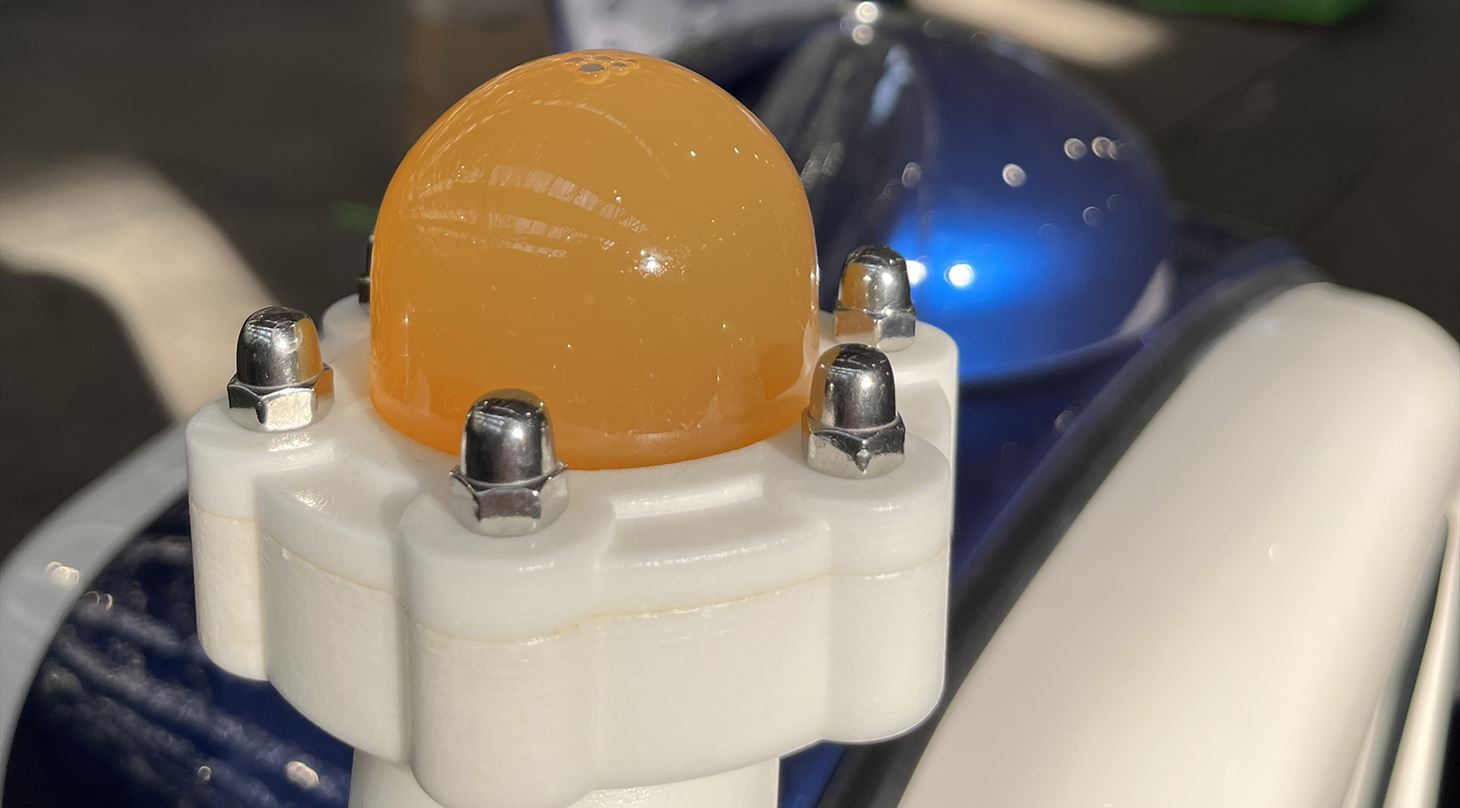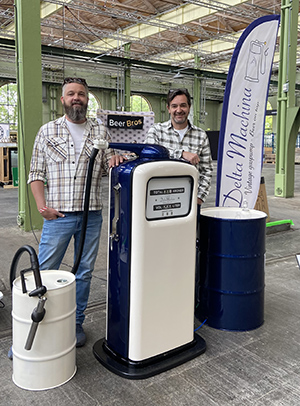
3D printing gets the beer flowing
Two cousins have transformed a vintage gas pump into a unique draft beer system – and 3D printing has played a crucial role in the process.
Cousins Mads Gravers Jeppesen and Jakob Jacobsen are the founders of Delta Machina, a company that has converted an old gas pump from 1958 into a draft beer system. In this project, they had help from the Danish Technological Institute (DTI) who 3D printed an important component that needed to be approved for food contact.
The innovative draft beer system consists of the pump itself, with the keg and CO₂ cylinder placed in an oil drum next to it. The beer flows through the nozzle, and the old meter counter rolls and shows how much is being poured.
 Special parts required
Special parts required
But before the cousins got that far, they needed a so-called “float housing.” In the redesigned system, the float housing is a stylish way to present the beer or cocktail being served.
- It just looks fantastic with a colorful drink in the float housing, condensation on the glass – it makes you want to taste it, says Mads Gravers Jeppesen, founder of Delta Machina.
Delta Machina had a new glass specially made for the float housing, and the next step was to produce the housing itself.
- We looked into different options, including having it cast in aluminum or steel, but that was relatively expensive, and there were also challenges regarding the actual design of the housing, says Mads Gravers Jeppesen.
Having invested in software and a 3D printer themselves and done many prints in PLA material, the cousins already knew the technology worked as intended. The challenge, then, was to find someone who could 3D-print using a material approved for food contact and achieve the right geometry and durability.
Danish Technological Institute provided the solution
After visiting a few manufacturers and researching online, Mads and Jakob realized that it was really only possible at DTI. They therefore contacted the Institute’s 3D printing specialists, who first printed an initial test component.
- After the actual print process, we gave the float housing a 3S surface seal to ensure the material does not absorb liquids. This is, of course, critical when beer is going to flow through it, says Christian Lemmermann, technical consultant at the Danish Technological Institute, who handled the task.
Once it was confirmed that the float housing worked as intended, three more were printed in white PA12 nylon, which – when printed in DTI’s production – is approved for food contact. The low number of units needed was also one of the reasons why 3D printing made good sense for the float housing, since there aren’t the same startup costs as with injection molding – making the technology especially suitable for small series.
If we hadn’t been able to use 3D printing, I can’t imagine this project would have become a reality at all. So, the technology was a fundamental prerequisite for making the project happen. Besides the visible part, many components were printed on our own printer. You can’t see them, but they also serve important functions in making the project a success.
- Mads Gravers Jeppesen, Delta Machina
Delta Machina’s system is now finished, and the idea is to rent it out to festivals and other events where beer and cocktails are on the agenda.